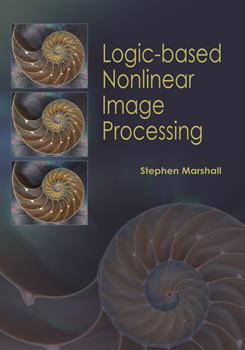|
In this book, a new model is given for the contrast sensitivity of the human eye with which a large number of published measurements can be explained. Furthermore, a metric is given for the calculation of the perceived quality of an image from the physical parameters of the image and the psychophysical parameters of the human visual system. The book represents the comprehensive results of about ten years of investigation in these areas. The contrast sensitivity model is based on the assumption that it is determined by the presence of internal noise in the visual system. First a fundamental mathematical analysis is given for the general properties of image noise and for the effects of noise on the perception threshold of the visual system. The effect of internal noise on contrast sensitivity is further elaborated in following chapters for various aspects of the visual system. The results are given in the form of equations that can easily be used for practical application. They are compared with a large number of empirical data. The last chapters of the book are devoted to the effect of contrast sensitivity on perceived image quality. In this part, a model is given for the nonlinear behavior of the visual system at suprathreshold levels of modulation and a metric is given for the description of image quality with the aid of the physical parameters of the imaging system and the psychophysical parameters that can be derived from the contrast sensitivity. In the last chapter, the effect of various parameters on image quality is treated, and several examples are given where the predicted image quality is compared with measurements.
The reason for the research on the subjects treated in this book, was the need for an objective measure of perceived image quality, which I felt during my professional work on the development of CRTs for television and computer display. It was clear that besides the physical data of the image, the contrast sensitivity of the eye plays an important role in such a measure. However, for the contrast sensitivity of the eye, which depends on luminance and field size, only a few measurements were available. Furthermore, it was not dear how the contrast sensitivity of the eye had to be combined with the physical parameters of the image to obtain a good measure for image quality. Therefore, I started an intensive study on these subjects after the end of my professional career. For the effect of resolution on image quality, I found that the nonlinear behavior of the visual system could be taken into account by applying a square-root relation between modulation and perceived image quality. Later it appeared that the so obtained image quality metric could not only be applied for the effect of resolution, but also for the effect of other parameters on image quality, like luminance and image size. For the effect of noise on image quality, I assumed that it was caused by the effect of noise on contrast sensitivity. To investigate this further, I made a study of published measurement data of the effect of various types of image noise on contrast sensitivity. After an evaluation of these results, the idea arose that the remarkable dependence of contrast sensitivity on luminance and field size could maybe be explained by the presence of internal noise in the visual system. However, to obtain a complete description of the contrast sensitivity function of the eye, still a number of additional assumptions had to be made. I tested these assumptions by comparing them with a large number of published data. Furthermore, I also tried to apply the same basic principles to other aspects of contrast sensitivity. The so obtained information appeared to be very useful for a further evaluation of a good image quality metric.
After having presented a part of my investigations in papers and in short courses, the idea arose to present the results more completely in a comprehensive book. For the first edition of this book, I chose the form of a dissertation at the Technical University of Eindhoven, because an important part of the measurements that I used for my investigations were made at the Institute of Perception Research (IPO) of this university. I was very glad that Prof. Roufs of this institute, who was in charge of the work on visual perception, was willing to act as supervisor of my dissertation. I am very grateful for the many hours he spent on reading the manuscript of the dissertation in a critical way and his suggestions for improvements. I am also very grateful for the support that I received during my investigations from Prof. van Nes of the same institute and from Dr. van Meeteren of the Institute for Perception TNO in Soesterberg. I also would like to thank Prof. Hooge and Prof. Butterweck of the Department of Electrical Engineering of the Technical University of Eindhoven for their advice on the mathematical treatment of the noise in Chapter 2, and I also would like to thank Dr. Tyler of the Smith-Kettlewell Eye Research Institute in San Francisco for his useful comments on Chapter 5 about the temporal contrast sensitivity. In particular, I would like to express my special thanks to my wife for her patience during the many hours that I spent on the manuscript of this book.
The present book is the textbook edition of the dissertation. It differs from the original version by the use of a hardcover, the addition of a subject index and a list of symbols, and by a few other changes and small text corrections that were made to adapt it to this application.
Peter Barten
August, 1999
|



